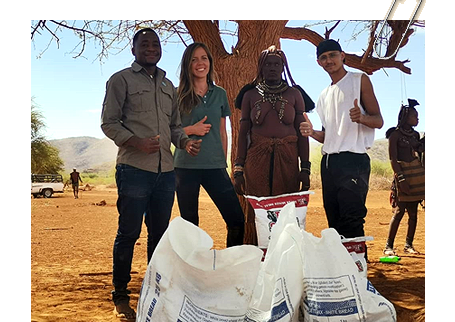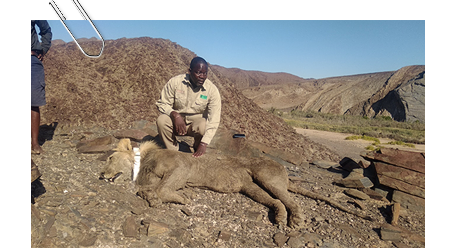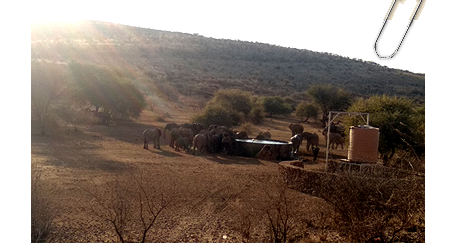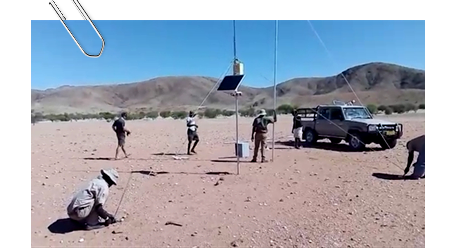Building community support for conservancies in the Kunene Region
In an effort to build awareness and support for conservancies amongst leading community elders in the northwest, more than 20 elderly farmers, most of them traditional authority members from Anabeb, Sesfontein and Purros Conservancies, participated in wildlife retreats. Farmers were taken camping and for game drives and were engaged in conservation discussions mostly on Human-Wildlife Conflict in each of the three conservancies. In each conservancy, the community members saw lions, rhinos, elephants, among others. The community engagement initiative by IRDNC is to ensure community members are continuously involved and plays significant role in conservation efforts, especially the elders and traditional authorities. This effort helped create awareness and provided an opportunity for influential elders to see these magnificent animals.
Communal farmers in the northwest of Namibia bear massive losses to both their livestock and crops from predators and elephants, respectively, coupled by the prolonged drought. Thus, both long-term and short-term assistance to Kunene communal farmers is important. Whilst long-term interventions such as electric fencing are being implemented or piloted, immediate support to crop farmers is necessary. In March 2020, at least 70 gardens were recorded as destroyed by elephants, thus IRDNC and Tourism Supporting Conservation (TOSCO) have raised small amount of money to support these farmers. This money is being used to buy maize meal and maize seeds, to provide to the farmers with immediate relief as most farmers are struggling during this harsh period of Covid-19 pandemic, drought and crop raiding.
Besides the monitoring of lions, patrolling and providing early warning to farmers regarding lion movements within or close to farming areas, the IRDNC`s Rapid Response Team assists Desert Lion Conservation Project (DLC) with tracking, baiting during collaring as well as translocations. Since September 2020, there has been five collaring attempts, whereby five lions were fitted with satellite collars, in the Ugab (one male), Huab (two females) and Hoanib (one male and female) rivers. This is to assist farmers with monitoring for conflict management purposes.
Rapid Response Unit (RRU) assist other conservancy clusters with game counts, full moon waterhole Elephant and Black-faced Impala counts. This year RRU also participated in both June and September game and waterhole counts, respectively. This is used as a monitoring tool for wild animals, determining numbers, showing trends in population growth, resource allocation, quota allocation, conflict managements, etc.
To warn farmers on sight at hotspot areas, early warning logger towers are instilled at homesteads/ farms. The logger has flashlights in all four directions and detects GPS signals on lion with collars. The lights goes off in the direction of the collared lion. This detection of collar signals can be sensed from a kilometre and beyond. The logger also produces an alarming noise as the predator further approaches , and at this stage, farmers can take all precautional measures at their disposal such producing noises and lights to scare the approaching lion(s). These loggers are mobile and being moved as deemed necessary as farmers move. At the beginning of November two more loggers were deployed at Khanamub and Tomakas in Sesfontein and Purros conservancy.

- IRDNC and TOSCO staff posting for a picture with some of the maize meals and maize seeds beneficially as immediate relief, at Ondjete village in Okatjandja-Kozomenje Conservancy

- Rapid response field facilitator, Linus Mbomboro, posting with a male lion in the Ugab River, after fitting him with a satellite collar

- A head of elephants drinking water, during fullmoon waterhole count at Otjite, Okangundumba Conservancy

- Rangers and RRU putting up a logger tower at Khnamub, Sesfontein conservancy



